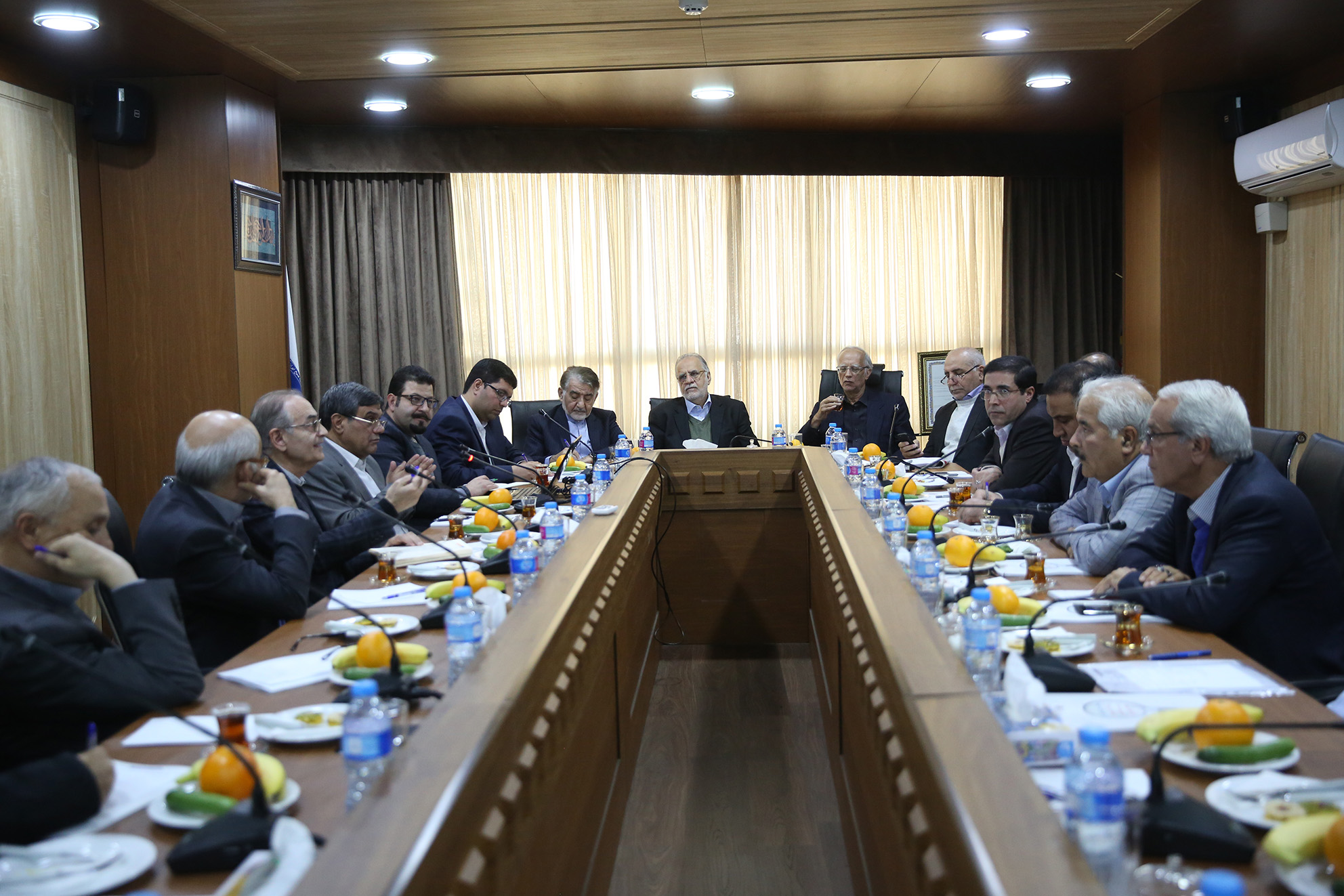The Eighth Iranian Steel Market Conference is only a few months away and Iranian government officials and industry players convened on Saturday to review ISMC 2018’s agenda and general outlook.
Scheduled to be held in the Iranian capital on Jan. 30-31, the event is hosted by Donya-e-Eqtesad Taban Company, the parent company of Financial Tribune.
The review meeting, held at Donya-e-Eqtesad' Conference Hall in Tehran, was attended by a host of private players and state officials, including the head of Iranian Mines and Mining Industries Development and Renovation Organization, Mehdi Karbasian; advisor to First Vice President Mostafa Moazzenzadeh; Deputy Minister of Industries, Mining and Trade Jafar Sarqeyni; the head of National Development Fund of Iran, Ahmad Doust-Hosseini; chief executive of Iran Mercantile Exchange Hamed Soltani-Nejad; Managing Director of Mobarakeh Steel Company Bahram Sobhani; Managing Director of Golgohar Mining and Industrial Complex Nasser Taghizadeq and CEO of Chadormalu Mining and Industrial Complex Mahmoud Nourian.
This year’s keynote speakers at the upcoming event include Joachim Schroeder, chairman of Research & Consulting Group AG. As a recognized steel industry expert with an over 20-year experience in the global consulting business, Schroeder is set to deliver a speech on the trends and prospects of global steel markets.
The event will also feature Andrey Pupchenko as one of its main speakers. He is deputy managing director of Ukraine’s Metal Expert. His speech will focus on the prospects of square billet export from Iran in the competitive environment of today.
Dennis Matos Gamboa, country manager of Spain’s Sarralle Group in Iran and managing director of Pars Saran Tandis Ltd., is another speaker. He will discuss “the roadmap for steel development plants” and “steel and the fourth industrial revolution”, in addition to issues, such as the world steel market status, export solutions, feasible products for development plants and financing solutions.
More foreign attendants are set to be added to the roster in the upcoming months, which will most likely include officials from Italy’s Danieli Group and Germany’s SMS Group.
The two companies’ officials, namely Gianpietro Benedetti and Burkhard Dahmen, were among last year’s notable attendants. Others included Austria’s INTECO CEO Haral Holzgruber and managing director of Sarralle Group, Javier Esquiroz.
> Iran Steel Industry Profile
Iranian steel mills produced 17.9 million tons of steel since the beginning of January up to the end of October, showing a rise of 20.9% compared with last year’s corresponding period, the latest report released by World Steel Association shows.
According to WSA, Iran’s steel output in October grew by 24.2% year-on-year to hit an estimated 1.98 million tons.
Iran’s steel sector is on a fast track to growth, as it recorded the highest expansion among all producers of more than 1 million tons per month for the 10-month period, beating the regional rival Turkey and also long-time European rival France.
The world’s 66 steelmakers produced 1.41 billion tons of steel during the 10 months, up 5.6% YOY.
Global steel output stood at 145.07 million tons in October, indicating a 5.7% increase YOY. Iran was the world’s 13th largest producer of steel during the 10-month period and was placed between Ukraine (12th) with 18.04 million tons and Mexico (14th) with 16.65 million tons.
As part of the 20-Year Vision Plan (2005-25), the Iranian steel industry aims to become the world’s sixth largest steelmaker by reaching an output capacity of 55 million tons per year by the deadline (2025). Iranian steel mills have so far realized more than 60% of the capacity target.
Exports are expected to reach 8 million tons in the current fiscal year, which ends on March 21, 2018, according to former minister of industries, Mohammad Reza Nematzadeh.
Latest data by the Iranian Mines and Mining Industries Development and Renovation Organization show 4.66 million tons of semi-finished steel worth $1.66 billion were exported from Iran during the first months since the beginning of the current fiscal year (March 21-Oct. 22), up 14.8% in volume and down 9.5% in value year-on-year. Billet and bloom shipments made up the bulk of exports,
The main challenges to the target’s realization is lack of balance in Iran’s steel production chain, underdeveloped transportation sector, surplus labor, declining economies of scale and the deep divide between demand and output, according to a report by Iron & Steel Society of Iran.
Data by ISS show there is a sizable imbalance between the nominal capacities of different links of steel production chain, and an even greater disparity in output.
The steel industry might be sprinting to the 55-million-ton target, but it will need to bring different sectors up to speed before it can achieve the goal.


